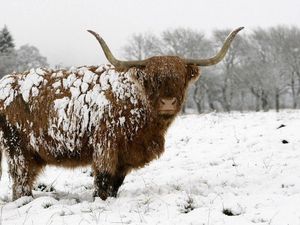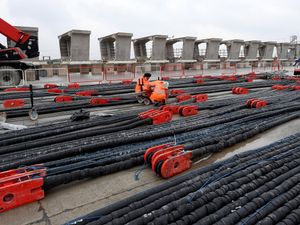Can it be too cold to snow? Meteorologist explains the science behind our favourite weather folklore
Do pine cones opening up mean good weather is coming?

Most of us plan our day based on what the weather is going to be like.
Choosing whether we’re wearing wellies or flip-flops more often than not depends on what our weather forecasters are telling us.
But it appears quite a lot of us (75%) still rely on traditional folklore to guide our day, according to a survey conducted by the Met Office.
Charlie Powell, Met Office meteorologist and TV presenter, breaks down the science behind the more popular myths – and some of them might prove to be quite handy when you don’t have access to that weather forecast app on your phone.
Red sky at night, shepherd’s delight

Powell’s verdict: Mostly accurate
“This is because high pressure tends to lead to good weather,” he explains.
“High pressure traps dust and dirt in the air, which scatters blue light, only leaving the red light remaining – hence the reddish appearance of the sky.”
If it is raining at 7am, the weather will be fine by 11am

Powell’s verdict: Largely true
“Weather systems in the UK are often spawned in the Atlantic, and these systems can sweep across the UK very quickly,” he says.
“So, on many occasions, four hours will allow enough time for the rain to pass. But, in some conditions, such as when there is a lack of wind, rain can hang around for much longer.”
It’s too cold to snow

Powell’s verdict: Incorrect – at least in the UK
“The colder the air gets (for example, minus 20C), the less water vapour there is in the air, reducing the likelihood of snow,” he explains.
“However, there are many other deciding factors when it comes to whether it will snow or not, and it is unlikely that in the UK we would experience temperatures cold enough to make it less likely to snow.”
Cows lie down when it is about to rain

Powell’s verdict: Incorrect
“There is no scientific backing for this at all,” he explains.
“Cows lie down for a number of reasons – including just having a rest – and there is no evidence to suggest it is related to the likelihood of rain.”
Pine cones open up when good weather is coming

Powell’s verdict: True
“In dry weather, pine cones dry out, which causes their scales to stand out more stiffly, giving an ‘open’ appearance,” he says.
“In damp conditions, they become more flexible and return to a more closed shape.”





